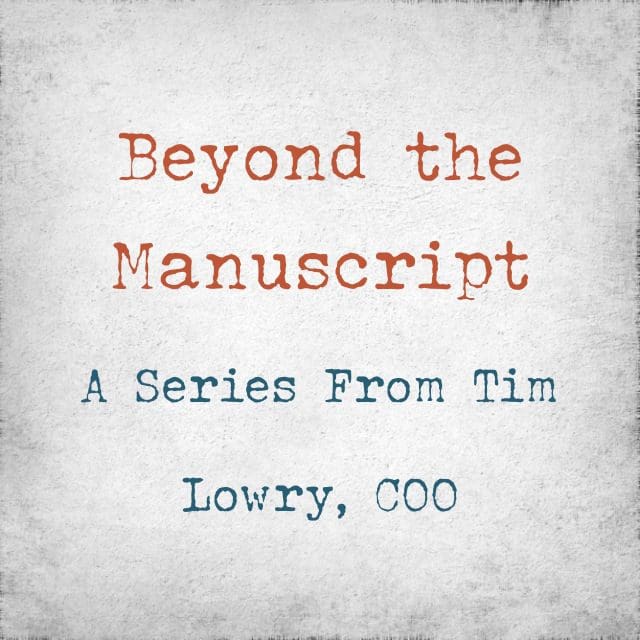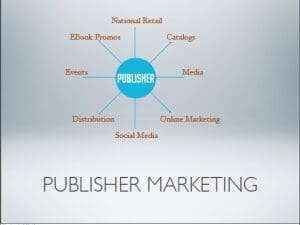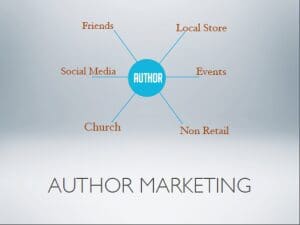 Over the span of six weeks Ambassador COO Tim Lowry will be sharing a series he calls “Beyond the Manuscript.” Whether you’re a new or seasoned author we hope you’ll find this material helpful:
Over the span of six weeks Ambassador COO Tim Lowry will be sharing a series he calls “Beyond the Manuscript.” Whether you’re a new or seasoned author we hope you’ll find this material helpful:
- Week 1: Author and publisher marketing
- Week 2: Creating a platform
- Week 3: Building your fan base
- Week 4: Developing your product launch plan
- Week 5: How to organize a successful signing
- Week 6: Engaging media on a local and national level
Over the last 5 weeks I’ve really enjoyed sharing the Beyond the Manuscript blog series with you. For this final week I called upon our publicist Alison Storm to provide some practical tips for engaging media on a local and national level.
Engaging the Media
Local Media
For many authors local media will be the best resource for spreading the word about your book.
- Highlight Local Ties: If you’re a Greenville, SC author getting a newspaper in Texas to care about your new novel is going to be a lot harder than getting the attention of the Greenville News. Think about what is going to make people care.
For Literal Lily, an Ambassador children’s book. The author’s mother-in-law illustrated the book. So rather than pitch the book itself, which doesn’t really have a news peg we pitched that it was a family affair and were able to book several interviews.
National Media
While booking a national show would be great, you may actually find that you sell more books after local media hits.
- Think About News Angles: This is especially important for novels and children’s books. The author of Dancing From the Shadows has personal experience with autism and the novel revolves around the subject. So we used that as a hard news angle to pitch the media during National Autism Awareness Month.
Practical Tips For Contacting Media
Access Decision Makers: Find email addresses of decision makers. Do Google research and you should be able to find the person you need to contact. At newspapers this person is likely an editor. At a TV station it’s an assignment editor or producer. At a radio station it’s a programming director or producer.
Don’t Use Attachments: Copy and paste your news release into the body of the email. Many news outlets have spam filters and do not accept attachments.
Offer Free Review Copies: Offer to send the decision maker a free review copy. Don’t simply send a free review copy unless you’ve found someone who is interested. That’s just a waste of resources.
Time Your Email Correctly: Do not email your news release at the end of the day or it may get lost in the shuffle. TV stations especially have a lot going on just before show time and this is not when they will be most attentive to your pitch.
Follow Up in One Week: A week after you initially contact media outlets follow up. Include your original email in your follow up email and be very brief. Ask simply, can I send you a review copy or answer any questions? Alison says she almost always has the majority of her success after the follow up.
Don’t Get Discouraged: Don’t be surprised if you don’t hear back. You may send out hundreds of pitches and only get one response. Don’t give up. Craft a new pitch. Use a new angle.
Once You Book an Interview
Prepare and Practice: Do not wing it. This is especially important for live interviews when time is limited. List out the main points you want to cover. Practice your sound bite answers. For TV appearances, wear solid colors and bring your book with you.
Don’t Say “My Book”: It is amazing how many authors will do an interview and never say the name of their book. It may feel awkward, but it’s extremely important that you work in the title of your book several times throughout the interview.
Smile and Get Excited: If you aren’t excited about your book, why would anyone watching your interview be moved to buy your book?
Don’t Expect Media to Sell Your Book: We’ve had authors appear on programs that we thought would result in huge sales boosts and the response was minimal. Media should be used as a tool in your arsenal, but it’s not the only thing that will help your book sell.
What experiences have you had with media?
I’ve really enjoyed sharing a lot of the basics with you. My hope is that you find these tips helpful on your journey to publication and marketing. If you’re just getting started talk with us, we’d love to learn more about your work and find out if we’re the right home for you and your title.







 For the last number of years I’ve been attending writers’ conferences across the Southeast as a publisher and enjoyed meeting with perspective authors, as I attended these conferences I found a common thread that many authors although they perhaps had good manuscripts had no real grasp on how to market their book or what to do next.
For the last number of years I’ve been attending writers’ conferences across the Southeast as a publisher and enjoyed meeting with perspective authors, as I attended these conferences I found a common thread that many authors although they perhaps had good manuscripts had no real grasp on how to market their book or what to do next.
